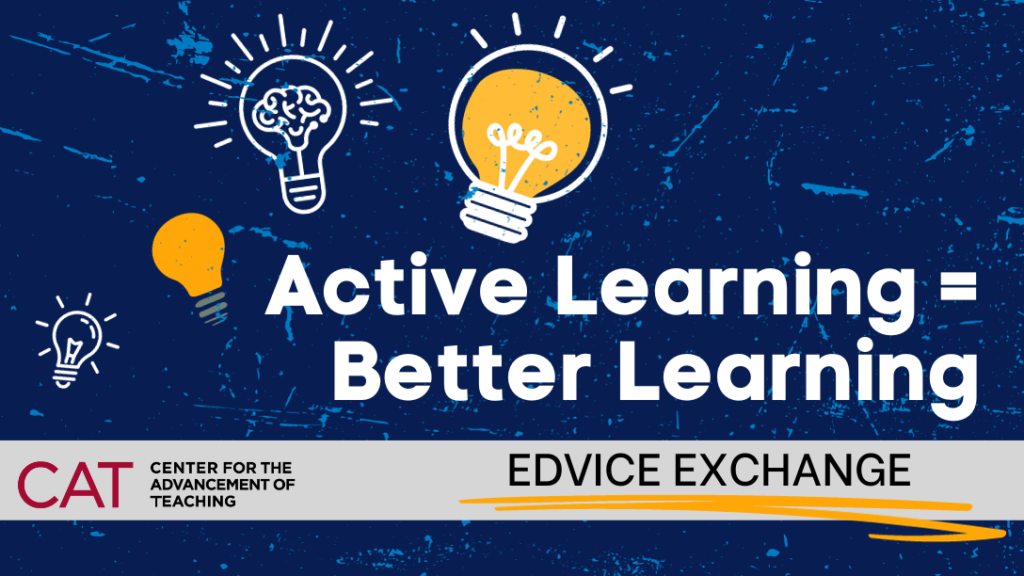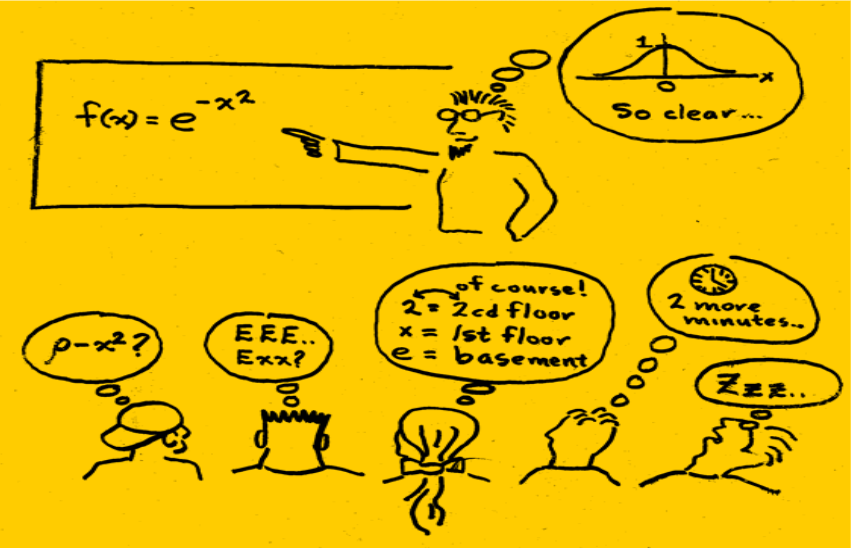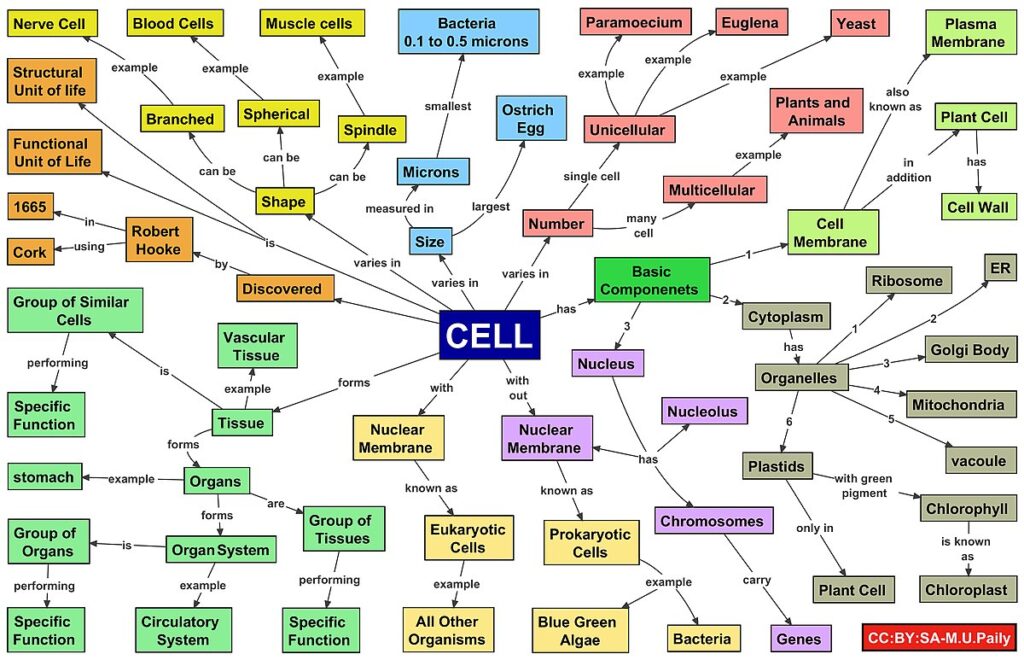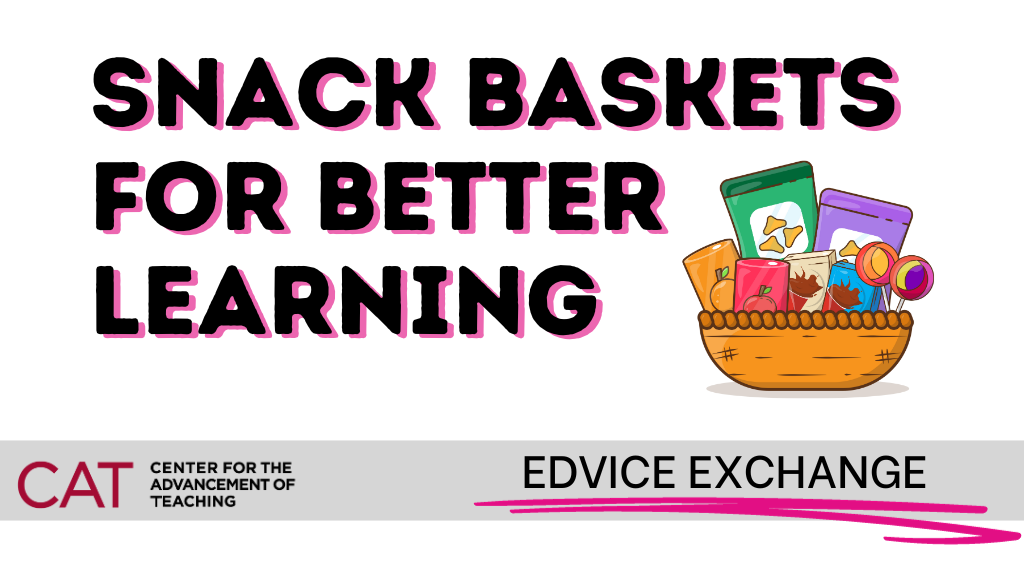by Cliff Rouder Ed. D and Linda Hasunuma Ph. D

In this last post of our series on active learning, we identify the challenges faculty sometimes face when planning and implementing active learning. We also give you some strategies for meeting those challenges.
How can I make time in class or online for active learning when I have so much content to cover?
While there are active learning strategies that don’t take a lot of class time and are easy to implement, integrating active learning into your class sessions will require rethinking the content you cover in class to ensure there is adequate time to complete activities. There’s a saying that’s useful to remember as you wrestle with what content may have to be moved out of class time: “If you say it, that doesn’t mean they’ve learned it.” So, ask yourself what foundational knowledge (e.g., definitions, factoids, easy-to-understand/background information on a topic) can be moved out of class time and assigned prior to class. To ensure accountability, you can give students a short assessment before or at the start of class. Another way to help you decide is by categorizing your content as “crucial to know,” “good to know,” and “tangential or unrelated to the Topic.” Often we include content that really doesn’t enhance students’ learning and does not move students toward meeting course goals, so consider simply removing it. Finally, remember that active learning strategies are used to address course content; they simply involve students in the process. While you may not be delivering the content in the form of a lecture, a well-designed active learning strategy will require students to grapple with key concepts, apply knowledge or skills and test their understanding.
I’ll lose control of the class if I don’t lecture.
Active learning doesn’t mean you give up control; it means that you provide opportunities for other ways of learning where you don’t take center stage while continuing to monitor and assist as students actively engage with course content. This short video demonstrates how instructors continue to guide students during an in-class activity. Viewing our role more as a facilitator of learning rather than as the dispenser of all wisdom can be a useful mindset to help you let go of this concern, especially if you are teaching large lecture courses. And remember, your TA or Diamond Peer Teacher can play a significant role in helping set up and monitor students when they work in pairs or small groups.
My students are used to lecturing; they’re not going to be happy campers.
For a variety of reasons, you may get pushback from students who have never been in an active learning classroom or who have had negative experiences. It’s not unusual for faculty to hear some version of these student comments: “I pay your salary, and I expect you to be the one to teach me!”; “My peers don’t know enough, or I’ll get misinformation”; “I hate group work!”; or “I take five classes, work, and take care of my younger siblings. How can you expect me to be prepared for every class period?”
These statements (and your concerns about them) are understandable, but here’s the thing: active learning can improve your SFFs! A 2019 study reported that “when the percentage of class devoted to lecturing fell between 20% and 60%, the most likely outcome was an increase of scores on student evaluations.” Not only that, but the messaging we give around active learning will greatly increase the chances that students will value the experience (translating to stronger SFFs).
There are three points that can be helpful in your messaging to students about your decision to use active learning strategies: 1. The skills they’ll develop as a result of actively engaging in the course will be of value to them (now and in their future professional lives); 2. There is a large body of research demonstrating that students in classes where active learning strategies are used learn more and retain what they have learned for longer; and 3. Acknowledging that “stuff happens,” and thus what you are hoping (or expecting) to see is that more often than not, they will come to class prepared to engage with the material and with each other.
Messaging about your use of active learning strategies can start before the semester begins. You might create a “welcome to the course” email or video in which you share a little bit about how your course will run and why that’s of value to students. In addition to the benefits of deeper understanding and better course outcomes, you can share these other valuable benefits: You’ll practice working collaboratively (skills crucial in most workplaces and in life!); you’ll hear different perspectives and thus will become a better listener and a better citizen; you’ll help create trust and a sense of community–a crucial element to feeling a sense of belonging, especially for students from underrepresented or marginalized groups or who are first generation college students. Raising the value of active learning is key! Keep in mind that the messaging may need to be repeated during the semester as student motivation and effort ebb and flow.
Then, devote a paragraph or two in your syllabus to your expectations for students, your role in an active learning classroom or online course, and the value of active learning. Here’s one way you can structure the messaging in your syllabus:
-
- Here’s my role (e.g., facilitator/coach) and why.
-
- Here’s your role (e.g., active participant) and why it’s so important for you now and in the future.
As we’ve presented in this blog series, there are a wide variety of active learning activities from simply pausing your lecture in order to ask a question all the way up to devoting an entire class period to learning activities (a.k.a. flipping the classroom). If you are new to active learning, we encourage you to dip your toes in the water and pick a few easy-to-implement activities to try out in the next semester. If they don’t go as anticipated, be sure to take some time to reflect on why. Getting your students’ perspective on how they went can never hurt. With each subsequent semester, tweak the ones you’ve tried as needed and consider adding some that are more involved. Always remember that your course goals should guide your choice of active learning activities. For example, if a course goal is to have students deliver effective oral presentations, think about the types of active learning experiences that would give students practice and feedback to prepare them to give a strong oral presentation.
The CAT is here to assist. Make an appointment for a consultation to help create or refine your active learning activities or to have us come observe and give you feedback on what you’ve tried.
Cliff Rouder is Pedagogy and Design Specialist at Temple’s Center for the Advancement of Teaching (CAT). Linda Hasunuma is Assistant Director at the CAT.





